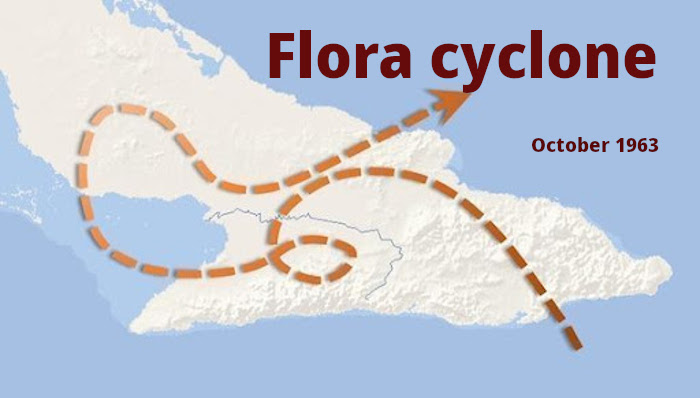Cyclone Flora in 1963 was one of the deadliest natural disasters in Cuban history, leaving thousands dead, destroying tens of thousands of homes, and reshaping the island’s approach to disaster response.
On October 3, 1963, Cyclone Flora struck Cuba with Category 4 strength, bringing winds of up to 160 km/h and torrential rains. Unlike most hurricanes that pass quickly, Flora stalled over eastern Cuba, looping across provinces such as Las Tunas, Granma, Holguín, and Camagüey, and unloading rain for nearly four consecutive days.

Deaths: Estimates range from 1,126 to nearly 2,000 Cubans killed, making it the second worst catastrophe in Cuban history after the 1932 hurricane.
Displacement: Tens of thousands were left homeless as entire communities were washed away.
Isolation: Floodwaters cut off towns, leaving survivors without food, clean water, or medical access for days.
Housing: More than 11,000 homes destroyed and 21,000 damaged.
Agriculture: The storm wiped out 4,000 caballerías of rice (a caballería ≈ 33 acres), devastated sugarcane fields, and drowned livestock.
Infrastructure: Bridges collapsed, roads disappeared under mudslides, and communications were severed across eastern Cuba.
Former Oriente province recorded an astonishing 1,840 mm of rain in just 93 hours—a level of precipitation never before seen in Cuba. Fidel Castro, then Prime Minister, personally helped save people.
Cyclone Flora became a turning point for Cuba, since the tragedy highlighted the vulnerability of rural communities, especially in mountainous eastern provinces; the government mobilized military and civilian brigades for rescue and reconstruction, laying the foundation for Cuba’s later reputation in disaster preparedness and civil defense; Flora’s devastation also reinforced the importance of state-led agricultural planning, as food shortages followed the destruction of crops.
Cyclone Flora was not just a meteorological event—it was a national trauma. The storm exposed the fragility of Cuba’s infrastructure but also galvanized collective resilience. In the aftermath, Cuba began building a culture of solidarity and preparedness, lessons that continue to shape its disaster response today.
Flora’s rains washed away more than homes and harvests; they revealed the need for a society capable of facing nature’s fury together. Sixty years later, the memory of Flora remains a reminder that Cuba’s strength lies not only in its geography but in its people’s capacity to endure and rebuild.

